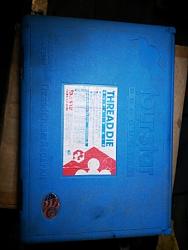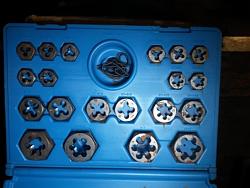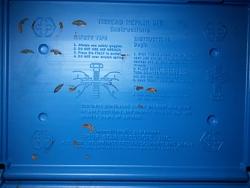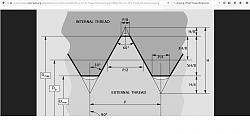Those are the ones not sure about the brand will have to check tomorrow I bought them at an auction for cheap because everyone thought since they were in halves they would not be any good.
I made $50.00 in 5 minutes using a 1/2 13 on a truck started bolt that the guy had arced a wrench on saved him the cost of pulling the starter and having it repaired He was happy and so was I because that more than paid for the set since then I've used it many times most folks are amassed at how well they work plus how much money I saved them


 LinkBack URL
LinkBack URL About LinkBacks
About LinkBacks



 Reply With Quote
Reply With Quote








Bookmarks